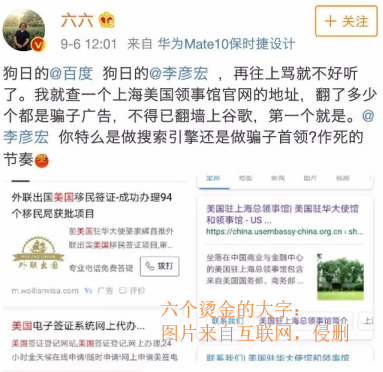ElasticSearch之-打分机制
Lucene和es的打分机制是一个公式。将查询作为输入,使用不同的手段来确定每一篇文档的得分,将每一个因素最后通过公式综合起来,返回该文档的最终得分。这个综合考量的过程,就是我们希望相关的文档被优先返回的考量过程。在Lucene和es中这种相关性称为得分。 在开始计算得分之前,es使用了被搜索词条的频率和它有多常见来影响得分,从两个方面理解:
-
-
一个词条如果在不同的文档中出现的次数越多,它就越不相关!
我们称之为TF-IDF,TF是词频(term frequency),而IDF是逆文档频率(inverse document frequency)。
The rules-which require employees to work from 9 am to 9 pm
In the weeks that followed the creation of 996.ICU in March
The 996.ICU page was soon blocked on multiple platforms including the messaging tool WeChat and the UC Browser.假如es索引中,有上述3篇文档:
-
词条
ICU的文档频率是2,因为它出现在2篇文档中,文档的逆源自得分乘以1/DF,DF是该词条的文档频率,这就意味着,由于ICU词条拥有更高的文档频率,所以,它的权重会降低。 -
词条
the的文档频率是3,它在3篇文档中都出现了,注意:尽管the在后两篇文档出都出现两次,但是它的词频是还是3,因为,逆文档词频只检查词条是否出现在某篇文档中,而不检查它在这篇文档中出现了多少次,那是词频该干的事儿。
逆文档词频是一个重要的因素,用来平衡词条的词频。比如我们搜索the 996.ICU。单词the几乎出现在所有的文档中(中文中比如的),如果这个鬼东西要不被均衡一下,那么the的频率将完全淹没996.ICU。所以,逆文档词频就有效的均衡了the这个常见词的相关性影响。以达到实际的相关性得分将会对查询的词条有一个更准确地描述。 当词频和逆文档词频计算完成。就可以使用TF-IDF公式来计算文档的得分了。
除了结合向量空间模型的实用评分模式,是es和Lucene最为主流的评分机制,但这并不是唯一的,除了TF-IDF这种实用模型之外,其他的模型包括:
-
Okapi BM25。
-
随机性分歧(Divergence from randomness),即DFR相似度。
-
LM Dirichlet相似度。
-
LM Jelinek Mercer相似度。
这里简要的介绍BM25几种主要设置,即k1、b和discount_overlaps:
-
k1和b是数值的设置,用于调整得分是如何计算的。
-
k1控制对于得分而言词频(TF)的重要性。
-
b是介于
0 ~ 1之间的数值,它控制了文档篇幅对于得分的影响程度。 -
默认情况下,
k1设置为1.2,而b则被设置为0.75 -
discount_overlaps的设置用于告诉es,在某个字段中,多少个分词出现在同一位置,是否应该影响长度的标准化,默认值是true。
PUT w2
{
"mappings": {
"doc": {
"properties": {
"title": {
"type": "text",
"similarity": "BM25"
}
}
}
}
}
PUT w2/doc/1
{
"title":"The rules-which require employees to work from 9 am to 9 pm"
}
PUT w2/doc/2
{
"title":"In the weeks that followed the creation of 996.ICU in March"
}
PUT w2/doc/3
{
"title":"The 996.ICU page was soon blocked on multiple platforms including the messaging tool WeChat and the UC Browser."
}
GET w2/doc/_search
{
"query": {
"match": {
"title": "the 996"
}
}
}similarity
PUT w3
{
"settings": {
"index": {
"analysis": {
"analyzer":"ik_smart"
}
},
"similarity": {
"my_custom_similarity": {
"type": "BM25",
"k1": 1.2,
"b": 0.75,
"discount_overlaps": false
}
}
},
"mappings": {
"doc": {
"properties": {
"title": {
"type": "text",
"similarity":"my_custom_similarity"
}
}
}
}
}
PUT w3/doc/1
{
"title":"The rules-which require employees to work from 9 am to 9 pm"
}
PUT w3/doc/2
{
"title":"In the weeks that followed the creation of 996.ICU in March"
}
PUT w3/doc/3
{
"title":"The 996.ICU page was soon blocked on multiple platforms including the messaging tool WeChat and the UC Browser."
}
GET w3/doc/_search
{
"query": {
"match": {
"title": "the 996"
}
}
}
ndex.similarity.default.type: BM25
boosting是一个用来修改文档相关性的程序。boosting有两种类型:
-
索引的时候,比如我们在定义mappings的时候。
-
查询一篇文档的时候。
以上两种方式都可以提升一个篇文档的得分。需要注意的是:在索引期间修改的文档boosting是存储在索引中的,要想修改boosting必须重新索引该篇文档。
PUT w4
{
"mappings": {
"doc": {
"properties": {
"name": {
"boost": 2.0,
"type": "text"
},
"age": {
"type": "long"
}
}
}
}
}
原因之一是因为一旦映射建立完成,那么所有name字段都会自动拥有一个boost值。要想修改这个值,那就必须重新索引文档。 另一个原因是,boost值是以降低精度的数值存储在Lucene内部的索引结构中。只有一个字节用于存储浮点型数值(存不下就损失精度了),所以,计算文档的最终得分时可能会损失精度。 最后,boost是应用与词条的。因此,再被boost的字段中如果匹配上了多个词条,就意味着计算多次的boost,这将会进一步增加字段的权重,可能会影响最终的文档得分。 现在我们再来介绍另一种方式。
PUT w5
{
"mappings":{
"doc":{
"properties": {
"title": {
"type": "text",
"analyzer": "ik_max_word"
},
"content": {
"type": "text",
"analyzer": "ik_max_word"
}
}
}
}
}
PUT w5/doc/1
{
"title":"Lucene is cool",
"content": "Lucene is cool"
}
PUT w5/doc/2
{
"title":"Elasticsearch builds on top of lucene",
"content":"Elasticsearch builds on top of lucene"
}
PUT w5/doc/3
{
"title":"Elasticsearch rocks",
"content":"Elasticsearch rocks"
}来查询:
GET w5/doc/_search
{
"query": {
"bool": {
"should": [
{
"match": {
"title":{
"query": "elasticserach rocks",
"boost": 2.5
}
}
},
{
"match": {
"content": "elasticserach rocks"
}
}
]
}
}
}content字段,加了boost的title查询更有影响力。也只有在bool查询中,boost
GET w5/doc/_search
{
"query": {
"multi_match": {
"query": "elasticserach rocks",
"fields": ["title", "content"],
"boost": 2.5
}
}
}boost。通过在字段名称后添加一个^符号和boost的值。告诉es只需对那个字段进行boost
GET w5/doc/_search
{
"query": {
"multi_match": {
"query": "elasticserach rocks",
"fields": ["title^3", "content"]
}
}
}title字段被boost了3倍。 需要注意的是:在使用boost的时候,无论是字段或者词条,都是按照相对值来boost的,而不是乘以乘数。如果对于所有的待搜索词条boost了同样的值,那么就好像没有boost一样(废话,就像大家都同时长高一米似的)!因为Lucene会标准化boost的值。如果boost一个字段4倍,不是意味着该字段的得分就是乘以4
GET py1/doc/_search
{
"query": {
"match": {
"title": "北京"
}
},
"explain": true,
"_source": "title",
"size": 1
}"size": 1返回一篇文档),只查看指定的字段("_source": "title"只返回title字段)。
{
"took" : 1,
"timed_out" : false,
"_shards" : {
"total" : 5,
"successful" : 5,
"skipped" : 0,
"failed" : 0
},
"hits" : {
"total" : 24,
"max_score" : 4.9223156,
"hits" : [
{
"_shard" : "[py1][1]",
"_node" : "NRwiP9PLRFCTJA7w3H9eqA",
"_index" : "py1",
"_type" : "doc",
"_id" : "NIjS1mkBuoj17MYtV-dX",
"_score" : 4.9223156,
"_source" : {
"title" : "大写的尴尬 插混为啥在北京不受待见?"
},
"_explanation" : {
"value" : 4.9223156,
"description" : "weight(title:北京 in 36) [PerFieldSimilarity], result of:",
"details" : [
{
"value" : 4.9223156,
"description" : "score(doc=36,freq=1.0 = termFreq=1.0\n), product of:",
"details" : [
{
"value" : 4.562031,
"description" : "idf, computed as log(1 + (docCount - docFreq + 0.5) / (docFreq + 0.5)) from:",
"details" : [
{
"value" : 4.0,
"description" : "docFreq",
"details" : [ ]
},
{
"value" : 430.0,
"description" : "docCount",
"details" : [ ]
}
]
},
{
"value" : 1.0789746,
"description" : "tfNorm, computed as (freq * (k1 + 1)) / (freq + k1 * (1 - b + b * fieldLength / avgFieldLength)) from:",
"details" : [
{
"value" : 1.0,
"description" : "termFreq=1.0",
"details" : [ ]
},
{
"value" : 1.2,
"description" : "parameter k1",
"details" : [ ]
},
{
"value" : 0.75,
"description" : "parameter b",
"details" : [ ]
},
{
"value" : 12.1790695,
"description" : "avgFieldLength",
"details" : [ ]
},
{
"value" : 10.0,
"description" : "fieldLength",
"details" : [ ]
}
]
}
]
}
]
}
}
]
}
}_explanation字段中,可以看到value值是4.9223156,那么是怎么算出来的呢? 来分析,分词北京在描述字段(title)出现了1次,所以TF的综合得分经过"description" : "tfNorm, computed as (freq * (k1 + 1)) / (freq + k1 * (1 - b + b * fieldLength / avgFieldLength)) from:"计算,得分是1.0789746。 那么逆文档词频呢?根据"description" : "idf, computed as log(1 + (docCount - docFreq + 0.5) / (docFreq + 0.5)) from:"计算得分是4.562031。
1.0789746 * 4.562031 = 4.92231557341264.9223156。 需要注意的是,explain的特性会给es带来额外的性能开销。所以,除了在调试时可以使用,生产环境下,应避免使用explain





【推荐】国内首个AI IDE,深度理解中文开发场景,立即下载体验Trae
【推荐】编程新体验,更懂你的AI,立即体验豆包MarsCode编程助手
【推荐】抖音旗下AI助手豆包,你的智能百科全书,全免费不限次数
【推荐】轻量又高性能的 SSH 工具 IShell:AI 加持,快人一步
· AI与.NET技术实操系列:向量存储与相似性搜索在 .NET 中的实现
· 基于Microsoft.Extensions.AI核心库实现RAG应用
· Linux系列:如何用heaptrack跟踪.NET程序的非托管内存泄露
· 开发者必知的日志记录最佳实践
· SQL Server 2025 AI相关能力初探
· 震惊!C++程序真的从main开始吗?99%的程序员都答错了
· winform 绘制太阳,地球,月球 运作规律
· 【硬核科普】Trae如何「偷看」你的代码?零基础破解AI编程运行原理
· 上周热点回顾(3.3-3.9)
· 超详细:普通电脑也行Windows部署deepseek R1训练数据并当服务器共享给他人